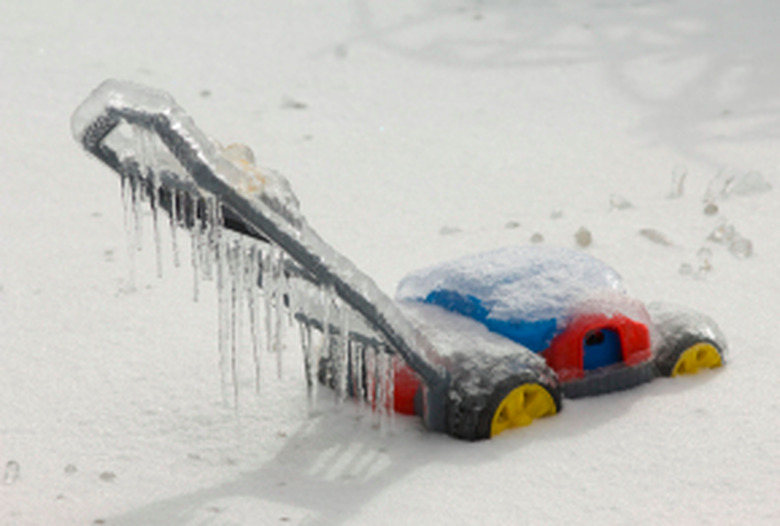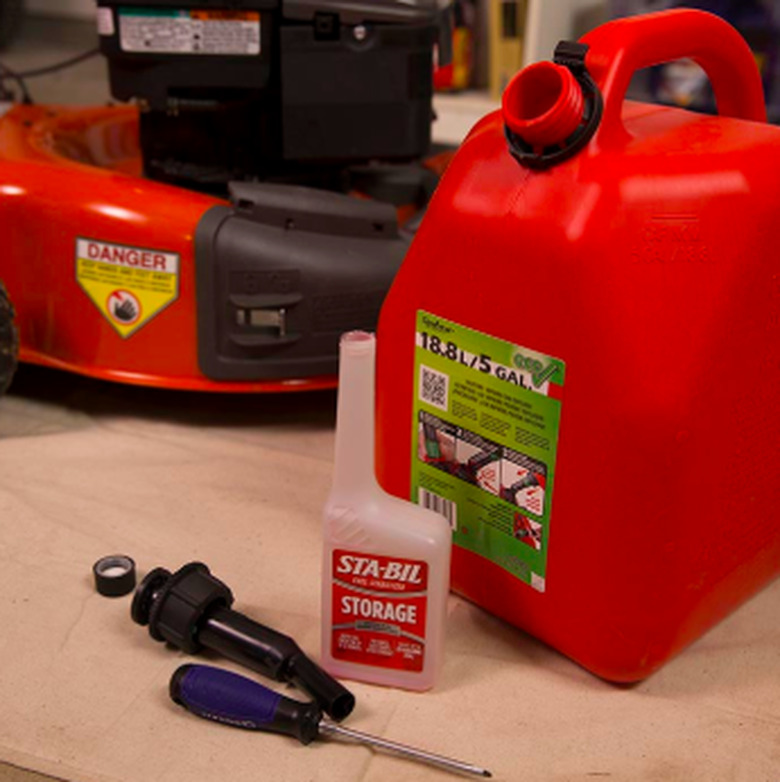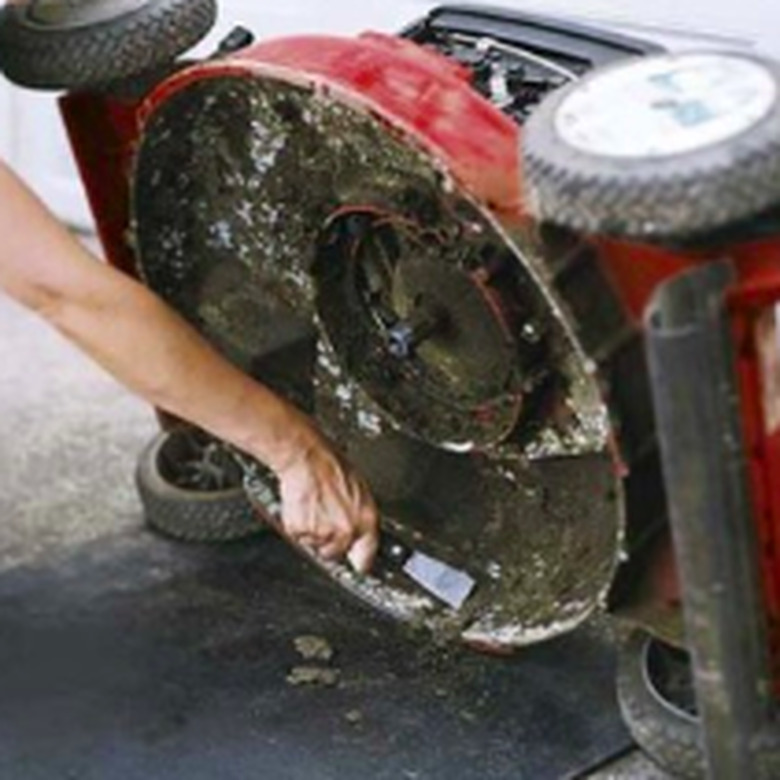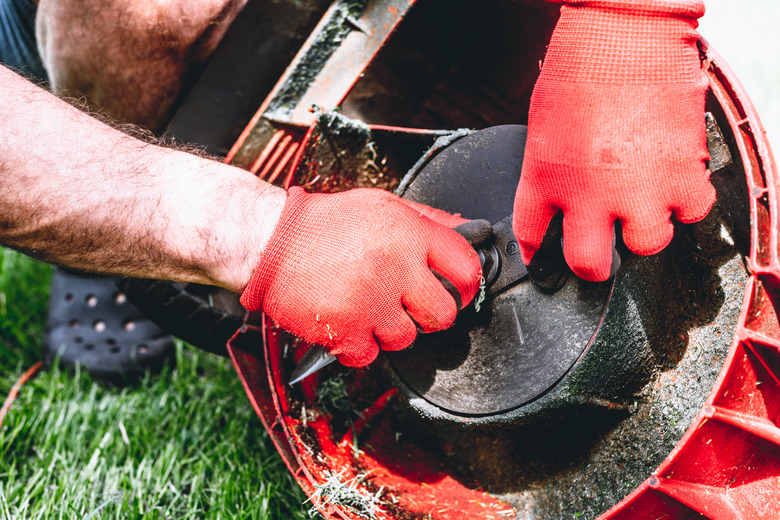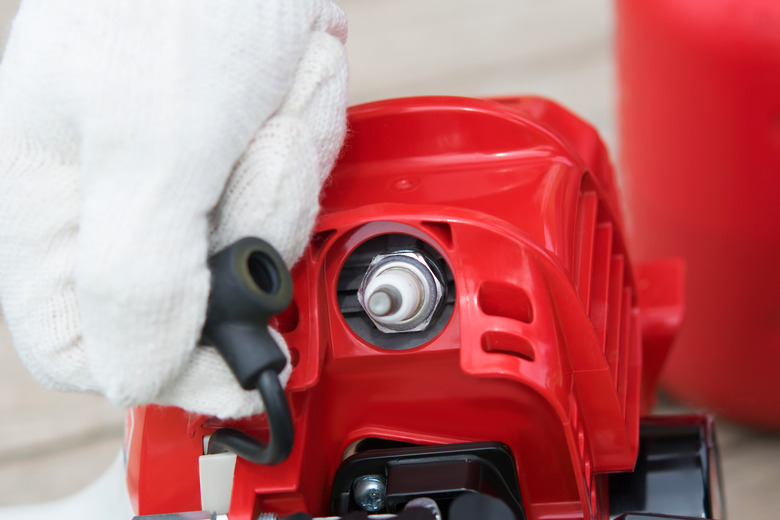How To Winterize A Lawnmower
When it comes time to put your lawnmower away for the season, there's a right way and a wrong way to do it. The wrong way is to simply roll the mower into the garage or the basement and (maybe) cover it with a tarp. Do that and the chances that the mower will start in the spring are slim. Not only that, but the mowing deck, engine housing and cutting blades could actually deteriorate during the cold winter months.
The right way is ridiculously easy, and it takes less than 30 minutes. If you think ahead, you can even skip the most important procedure, which is stabilizing the fuel, by letting the mower run dry when you're doing your last mowing job of the season.
This is a good strategy for both four- and two-stroke engines, although lawn mowers with two-stroke engines (where oil is mixed into the gasoline) are no longer common. Of course, you don't have to worry about fuel if you have an electric or battery-powered mower, but you should still prepare it for its winter hibernation by giving it a thorough cleaning and, if it's battery powered, removing the battery.
Stabilize the Fuel
Stabilize the Fuel
Stabilizing the fuel is the single most important thing to do before putting your lawnmower into winter storage. The stabilizer prevents the fuel from absorbing moisture and gumming up the carburetor. Of course, you don't have to do this if you've let the tank run dry, but if you haven't, go ahead and fill the tank, then check the fuel-to-stabilizer ratio on the stabilizer container and pour in enough to handle that amount of fuel. If you don't know the tank capacity, look it up in the manual or check online. Turn the engine over to circulate the stabilized fuel in the carburetor and fuel lines.
If you're storing your lawnmower in the basement or anywhere else in your house, it isn't a good idea to keep fuel in the tank, because it could ignite and cause a fire. If you can't run the tank dry, remove excess fuel with a siphon hose or an old turkey baster and either dispose of it, or add stabilizer and store the mower outside the house in an approved container.
Clean the Undercarriage
Clean the Undercarriage
Clumped grass collecting on the underside of a lawnmower deck retains moisture, and if left over winter, the moisture can corrode the metal. The clumps eventually turn hard and become more difficult to remove in the spring. Spring is a time for fresh starts, so make sure your lawnmower has one by cleaning off the grass with a stiff putty knife and a hose.
You have to turn the mower on its side to perform this task, and it's best if the gas tank is empy when you do this. If you aren't going to empty the tank, be sure to turn the mower so the carburetor is facing up. That way, it won't get filled with excess fuel. Remove the spark plug lead to eliminate any chance of a freak accident.
Clean and Sharpen the Blades
Clean and Sharpen the Blades
Cleaning or replacing the blade is a job to do at the same time as you're cleaning the undercarriage. In fact, removing the blade first makes cleaning easier. To remove the blade, wedge a piece of wood between the blade and the mower housing to prevent the blade from moving while you unscrew the nut with a socket wrench. Remember, the nut is probably a reverse thread, which means you turn it clockwise to loosen it.
If the blade is dull, restore the edge with a power grinder, being careful to remove the same amount of material from both sides. When you're done, hang the blade from a nail in the wall to make sure it's balanced. If it won't hang horizontally, grind a little off the heavy side until it does. Replace the blade and tighten the nut by turning it counterclockwise.
Change the Plug and Oil the Cylinder
Change the Plug and Oil the Cylinder
Even if the existing spark plug isn't that old, condensation in the cold air is bound to worsen any deposits on it. You could clean the plug, but why not just replace it? Unscrew it with a spark plug wrench and purchase an identical one to take its place. Before you install the new plug, spray a little motor oil in the hole to leave a protective coating on the valve cylinder. Using the electronic ignition of the starter cord, crank the engine a few times to circulate the oil, then screw in the new plug.
Storing the Mower
Storing the Mower
The lawnmower doesn't have to be in a warm place for the winter, but it does need to stay dry. Don't leave it outside, unprotected. If you can keep it in the basement, that's probably best. Just be sure to empty the fuel tank. You can also store it in the garage or a garden shed, as long as you're sure there's enough ventilation to prevent condensation that could foul the carburetor even if the fuel is stabilized. If you're strapped for space and you have to leave the mower outside, place it on a pallet or some other raised platform and wrap it with a waterproof cover or tarp. Secure the tarp with bungee cords to ensure it doesn't get blown off by the wind.
Store Batteries Indoors
Store Batteries Indoors
If you have a corded electric motor or a battery-powered mower, all the tips about cleaning the mower and sharpening the blade still apply. Storage is a little less critical since there is no gas engine for moisture to condense in. But on a battery-powered mower, make sure to store the battery indoors where it can stay above freezing for the winter. Several months of freezing temperatures can be hard on mower batteries. Gas mowers with electric starters should also have their batteries stored indoors. A cool (not freezing) dry location is best for storing batteries.
